Epilogue - Connecting Planners To Their Senses & Standards (February 21, 2025)
Re-Connecting Standards to Processes and Sustainable City Outcomes

Vlog Overview
"Parks and Like Icebergs" (PALI) is an exploration of various aspects related to municipal parks, including urban parks planning and subsequent park service operationalization. The synergy of processes between the two is integral to the creation of sustainable cities. The vlog marries my extensive municipal planning experience (32+ yrs), including 29+ years as a parks practitioner years, with a PhD in parks planning decision-making using institutional theory in Edmonton Albertan in park land decision-making. In addition, I have created and taught four, three credit, courses in municipal parks planning at the University of Alberta in their urban planning program to fourth year and graduate students. The urban planning program has been accredited by the Canadian Institute of Planners, teaching our next generation of urban planners. I am available as a teacher, guest speaker, coach, consultant, keynote speaker, etc.
The vlog's intended audience include elected officials, planning professionals, landscape architects, consultants, community engagement practitioners, recreationists, academics, community NGOs, and individual and group planning process social actors. I have a Phd also in sarcasm, use self deprecating humour, storytelling, not to mention lots of adjectives and adverbs.
If there is one overriding theme inherent in my vlog, it is this! Park planning and park service operationalization practices are structurally integrated AND nuanced at both the macro level (city/region, province, national) and micro level (i.e., neighbourhood, park site). Process matters. Context matters. Knowledge transfer matters. Transparency matters. Recognizing power and agency in process matters.

Todays Ice Sculpture - Epilogue - Connecting Planners to Their Senses
I recently completed a three part vlog on how parks are experienced at a sensory level (January 30, February 2 and 4, 2025). We experience everything through our senses. This vlog speaks to the disconnect between sensory experiences, how people actually experience parks, and the use of macro level quantitative park property “adequacy” standards. Houston… we have a problem!
Wicked Planning Problems
There is a term in the planning world called wicked planning problems. They are problems that defy easy definition, have no easy and meaningful metrics to evaluate, social actors have different world views, different levels of power and agency, etc. Elected officials, administrators, landowners, consultants are fluent in urban planning legislation, language and nomenclature based on property measures grounded in settler colonial legislation. The same is not true for community social actors directly impacted by land use change processes, revealing asymmetrical power and agency between process participants. Parks planning decision-making, by quirks of settler colonial legislation qualify as wicked planning problems. At its root is the clash is the clash between ”property” and “activity and program benefits” (i.e., health and wellness, social/cultural benefits, ecological goods and services). The latter are the cornerstones of sustainable city development.
Park Property “Adequacy” Planning Standards
Since 2006, Edmonton uses two property based quantitative measures to determine park land property adequacy; the amount of park land (i.e., number of hectares) and proximity to park lands (i.e., within 500 metres), applied at the site/ neighbourhood (micro) level. Prior to 2006, that discussion also included a qualitative community recreation and leisure measures to understand community need and inform democratic decision-making at the micro neighbourhood/site level. Qualitative measures allow the park story by the community to be told on multiple levels. Qualitative measures effectively define the benefits of parks and park programs, and can be revealed in park sensory storytelling. What do quantitative measures actually tell us? More importantly, what don’t they measure? The term park land adequacy begs the question… adequate for what?


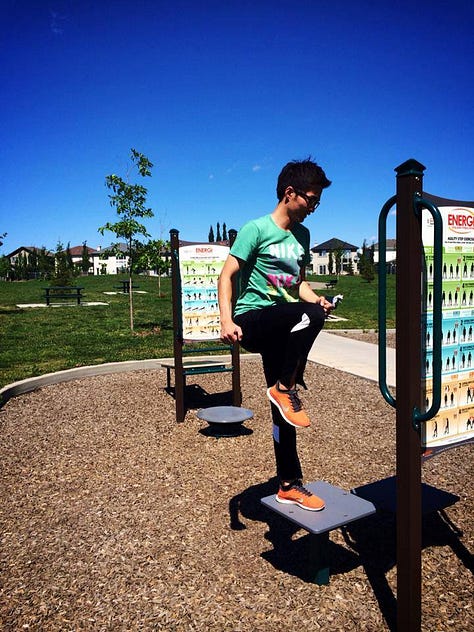
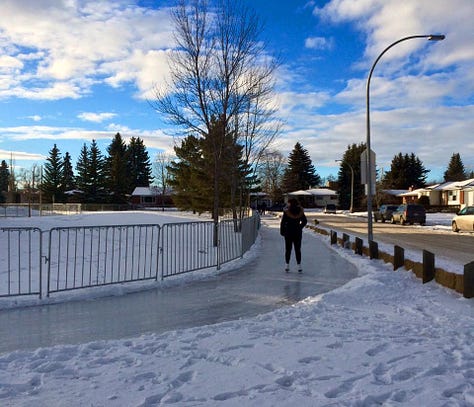


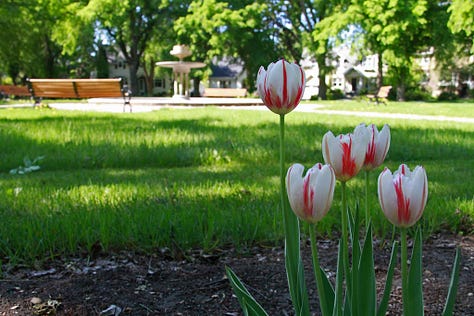


These City of Edmonton photos speak to the diversity of people, activities, and partners that promote active and passive, structured and unstructured recreational activity, providing multiple health and wellness, social & cultural & economic benefits, while simultaneously providing ecological goods and services. What park land size or proximity measure represents the above? (Rhetorical question only.)
Connecting Planning Standards To Park Use
Quantitative planning metrics, used alone, provide a shallow connection to community park land need. Park lands are designed based on recreational, leisure, educational, social, cultural health and wellness needs, and ecological program needs. Activity and program1 drives design, which drives park size, location and configuration. The amount of land is an outcome of those needs, not the starting point. In applying (only) quantitative metrics:
· Every neighbourhood is treated the same regardless of neighbourhood size, location, population, density, demographics, culture, social realities/ dysfunction, etc. Quantitative standards do not address the number and type of park site(s) amenities, site location, configuration, and safety, all of which impact the functionality of parks, and ultimately use of parks.
· Some neighbourhoods have more land based on the activities and programmed served. Some have more than one school, or a community league facility, each of which are planned and do serve multiple neighbourhoods.
Since the early 60s parks have been planned on a “systems” basis, in fact a “system of systems” basis (i.e., recreation centres, sport fields, schools, natural areas), where activities and programs are materially located across an urban landscape, each site servicing one or often more neighbourhood.
· Park land availability is an artifact of history and legislation of the day, not todays community need. Some areas simply have more or less property depending on the park’s standards of the day. Areas in Edmonton built before 1950 have less park land than since that time.
· Existing quantitative standards do not factor growing and evolving recreational, leisure, educational, social and ecological needs as we densify, with the consequent reduced private indoor and outdoor private spaces. Nor does it recognize the creation of growing urban heat islands by today’s residential urban development practices as we densify.
In addition, quantitative measures are silent on the following activity and program outcomes:
· Recreation and leisure activities on park property reduce social dysfunction including mental health, drug addictions, stress, social intolerances, etc along with growing rates of obesity and type II diabetes, and some types of cancer. Doctors today prescribe “green” prescriptions (i.e., nature bathing).
· Park land property, including manicured and natural areas sequester pollution, reduce storm water management costs, and reduce urban heat islands.
· Parks are four season places, whose activities and evolve with the change in seasons, not to mention time of day and time of week.
Municipalities regularly track the number of cars and trucks on the roads, storm and sanitary volumes and performance, the speed of planning application approvals, the number of potholes filled, the maintenance status of infrastructure of all types, including park amenities. Much less data is collected to quantify and qualify the number and type of park users. Community satisfaction with municipal park services was always high in my entire tenure in Edmonton from 1985 through to 2014.
Volunteer burnout, has always been an issue, increasingly made worse by the downloading of park services to community NGOs and community members that began in the early 80s. The change was embraced by the community at a time when Edmonton municipal governments could not keep pace with park needs, and politicians were loathe to raise taxes. A happy accident for neoliberal policy makers! Today those same lands built and programmed with and for the community are being surplussed for sale using quantitative park adequacy standards; end stage neoliberal policy.
All the above activity and programmatic considerations vary by site. Site considerations include physical location, site size, configuration, amenities provided, the scale of activities accommodated, and the functionality of the site. Each site and amenity within serve a specific “market” (i.e., playgrounds for children, sports fields for youth and adults, natural areas for ecological goods and services, community gardens for adults, elementary, junior or high schools, and/or programs of choice such as language, sports, pedagogy).
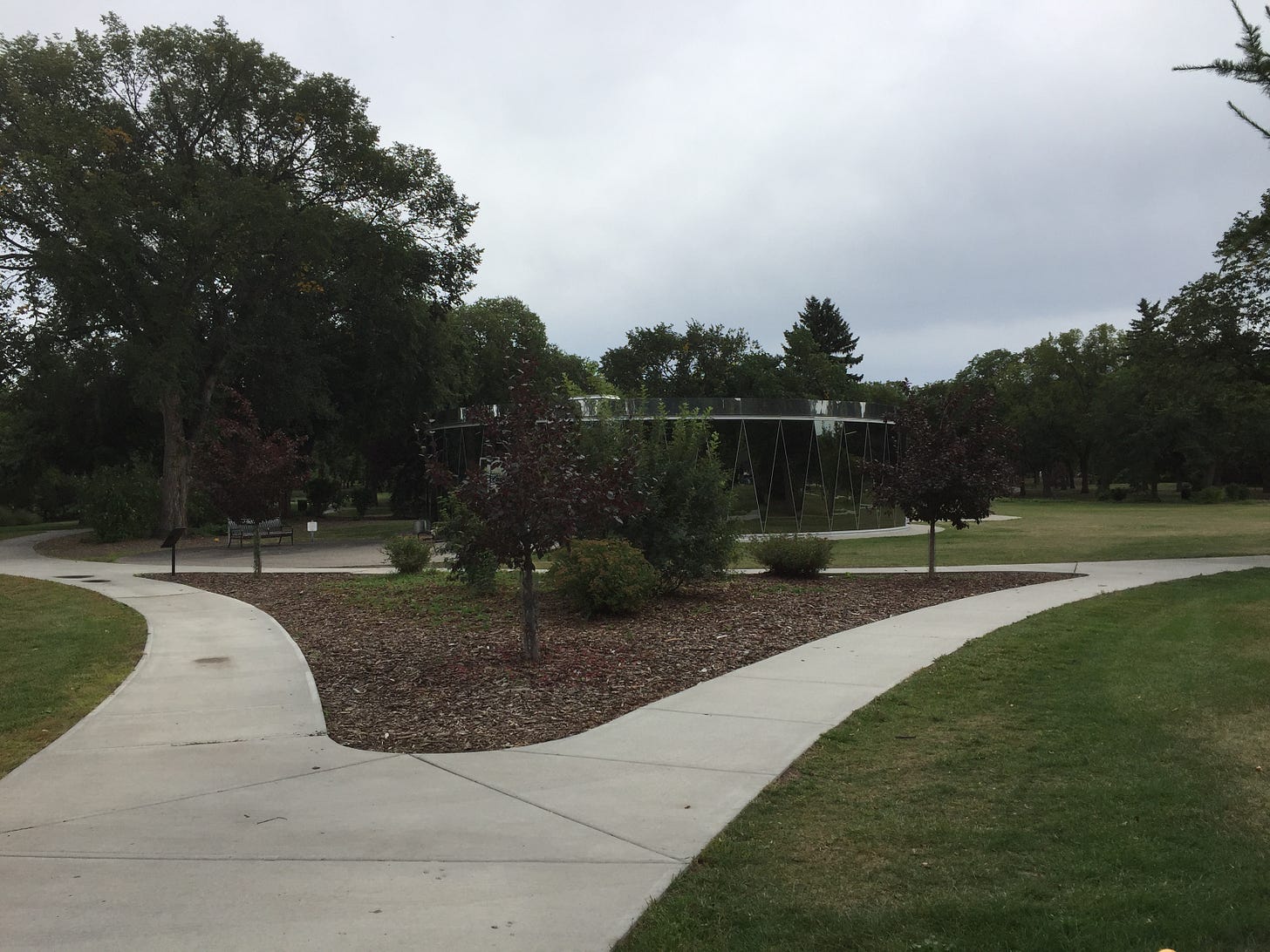
The sensory story series were designed to give some insight into that complexity of park use seen from the lens of a single park user (i.e., my own). Layer my experiences with other individual users or groups of parks of different ages, cultures, education, interests, incomes, language, gender, sexuality, etc. Add to that complexity is for those who prefer to connect with their community, connect with nature, be alone, be with friends and family, or combination thereof. As such, each user and each park tells a different story that needs to be collected and undin land use change processes.
Re-Connecting the Dots between Quantitative and Qualitative Park Adequacy Measures
Quantitative standards have always been part of the park land planning and adequacy review processes and are valid as a starting point. Park land change requires a deeper dive with the community to see if the parks property inventory is meeting today and tomorrow recreational, leisure, educational, social, health and wellness and ecological needs both at system wide and at the site (micro) level. A combined qualitative and quantitative review process allows the community to tell the lived experience of the park today, and how we got to today, which is the starting point of all future planning activities, and address what existing needs may or may not be not addressed. It relocates the discussion to community need, which was the reason parks were created and exist today, and whose needs continue to grow and evolve. Until 2006, Edmonton planners took this approach, community need considerations has been reduced to property-based (only) approaches, not community use or need based approaches.
Reducing park use perspectives to quantitative park measures serve only to expedite political review processes, disengage the community from the micro site input, using ambiguous and inauthentic sustainable city rhetoric, while using a crisis narrative. It’s the very definition of neoliberal policy.
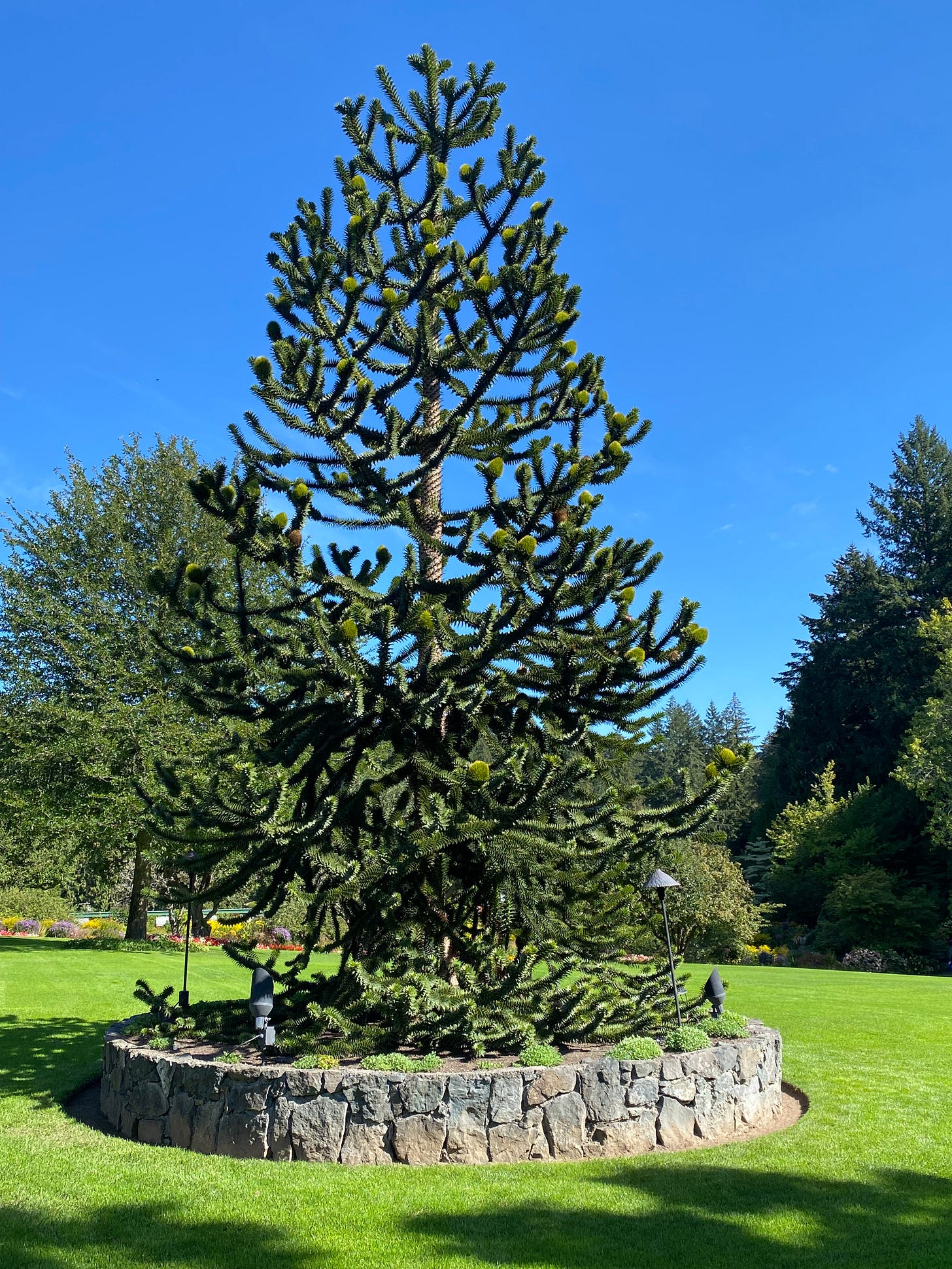
Concluding Remarks
My sensory park series stories (PALI January 30, February 2 and February 4) used storytelling are examples of my personal (but not unusual) lived park experiences, articulated in ways that surface in conspicuous ways (i.e., use of adjectives and adverbs) how parks impact a user through their senses. Its not just the land that impacts us, it also includes what happens on the land.
I do not expect or suggest you craft site and associated system review processes that follow my storytelling approach, but I am working on that. Rather, seek to find ways modify land use change processes aimed at unearthing the more fundamental benefits and experiences of individual parks through the development of a community engaged quantitative and qualitative review processes to inform park land decisions, before public notices are mailed, and public hearings held. Academicians have decried the use of public hearings as a tool to generate public consensus, and advocate for more consultation earlier in processes at the micro level (Farkas, 2012 Citizen (in) action: the limits of civic discourse in city council meetings). Given the asymmetrical power and agency between administrators, elected officials and economic interests have over the community, the process may matter as much as the decision and outcome itself. (We seem to have a problem these days with trusting government with expedited approval processes.)
Watch this space for a future vlog that will provide more definitive ideas on how to apply sensory analysis …I need to discuss more with Tasha.
Amenities, activities and program were previously defined (PALI - Park Definitions and Terminology, October 11, 2024). An amenity can be a constructed feature such as a picnic table or playground structure, or a tree stand preserved for public use and access. An activity could participation in a soccer league or tournament, walking, biking, suntanning, or bird watching. A program could be broader sustainable city benefits such as heath and wellness, social and cultural benefits, as well as ecological goods and services.




